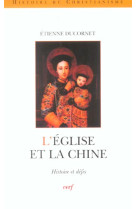--
We have known Frédéric Ozanam since his beatification by John-Paul II in 1997, and through the numerous works devoted to him. But what do we really know about the charity he helped to found? The little charity conference in 1833 brought together a handful of students from the Latin Quarter, Catholics and Romantics, to pray together and to visit the poor in their homes. On the eve of the Commune (1871), the Saint-Vincent-de-Paul Society had become one of the principal charities in the Catholic world. Nowadays, it numbers more than 700,000 members in almost 150 countries. This book reveals the reasons for this success and conducts the reader on the path of a social and religious history. By means of a rigorous prosopography, it brings to light the typical trajectory of several hundred socially-minded Catholics. Between the deeply religious person of the grand siècle and the voluntary community helper of today, there was a time for the man of charitable works, a model of commitment who has been unjustly discredited when compared to the more recent figure of the militant. In this way, the author delineates the ‘Vincentian path', an active mysticism that finds Christ through encountering the poor and shapes the practice of an audacious lay ministry. He sets out the register of charitable works, particularly in Paris where the destitute and their hovels abound, and their evolution under the effect of the Hausmannization of the capital under the Second Empire. He concludes with an anthropological interpretation of the ‘charitable donation'. There is one insistent question that traverses the book: isn't charity a means of forging social links? A symbol of anti-modernity, it is perhaps more political than it seems at first view. A topic to be debated in years to come.







